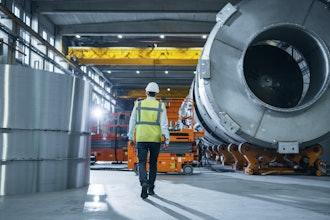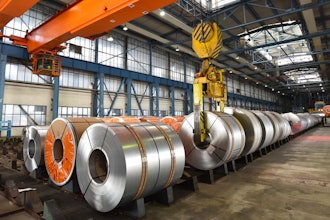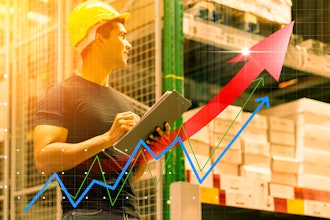Super-Steel Could Escalate Ford vs. Chevy Bench Racing
Ford- vs. Chevy- vs. Mopar-style bench racing’s been going on since cars have existed (and continues today in politics, of course).
Back in the day, Ford, Chevy, and Chrysler poured many millions of dollars into winning professional drag races on Sunday; those wins resulted in more showroom sales on Monday. The approach worked on the sales side, and ultimately brought to the general public some wonderfully wicked rides thanks to enthusiastic, innovative, way ahead-of-the-curve engineering.
While manufacturers still tout their engineering in NASCAR and IndyCar, for example, automaker branding is no longer at the forefront. Sponsor branding is. (So, bench racing isn’t what it used to be.) That could be why automakers these days much more seriously attack one another in off-track advertising. Since trucks still make for a huge market, that’s where most of the fights happen. My truck hauls more. My truck tows more. My truck has more torque. My truck’s lighter with military-grade aluminum. My truck’s stronger with steel, and look: here’s a bear to prove it. That kind of thing. Today’s most popular pickups are, in my opinion, unnecessarily gigantic, but one’s got to give serious kudos to their engineers. Yes, the trucks are gargantuan. But, they’re (relatively) light, more powerful, much more luxurious, more spacious, and more economical than any comparable truck back in the day.
The next part requires a bit more setup. In 2011, it was announced that Detroit entrepreneur Gary M. Cola Jr. turned ‘centuries of alloy processing on its head’ by creating Flash Bainite. According to this article at Engadget…
Instead of heating the metal for hours or days, this well-equipped DIYer boosted the temperature—quickly baking, then cooling sheets of steel that are 7-percent stronger than other forms and tougher than some titanium alloys. Flash Bainite is also more ductile than other steels, allowing it to crumple more before breaking—perfect for absorbing impacts. Obviously this means stronger and lighter cars, laptops, and armored vehicles but, since the process takes all of about 10 seconds, it's also more energy efficient and cheaper than traditional steel making.
Why talk about something invented several years ago? Well, Cola’s apparently turned out to be legit despite scientists wondering about the physics of what’s happening. Presumably, since the discovery wasn’t made in a mega-dollar R&D lab in academia, lining-up related legal ducks and getting important players to notice took quite a while. According to this interesting read at Gizmag, Cola’s Flash Bainite is…
…now being tested by three of the world's five largest car manufacturers, who are finding they can produce thinner structural car components that are between 30-50 percent lighter and cheaper than the steel they've been using, while maintaining the same performance is crash tests. Those are revolutionary numbers in the auto space.
Plus (Link intact.)…
The quick heating and cooling stages produce a unique mix of fine martensite, bainite and carbides—if you want to get all metallurgical about it, knock yourself out.
In one example of many, a structural automotive component that’s currently 3-mm-thick and weighs 3 lbs can be replaced by a 2-mm-thick part weighing 2 lbs that passes all of the same tests and also results in a process cost savings. By any measure, that’s noteworthy and substantial.
What about the aluminum vs. steel bench racing? Well, Cola says…
“…while aluminum is good for hoods, decklids and door skins, Flash offers higher strength per pound for structural safety components.”
Another Wow Factor: Flash equipment costs about $300K and requires only a one-car garage space-wise, compared to Big Steel with “their $400M, seven story-tall furnaces.”
Here’s a worth-watching video of the Flash Bainite process handling tubing…
Of course, equipment could fairly be created to process a wide variety of shapes.
Aluminum vs. steel bench racing is about to get even more interesting.
Hmm. Spokesman for Flash Bainite? (Heck, Sam J. Jones probably has some free time in-between Ted movies and Comic-Con.)
How a Camera Can ‘See’ Around Corners
It’d be really cool (and of great interest to military and law enforcement) if we could see around corners without cumbersome mirrors and unobtainable X-ray vision. Apparently, according to researchers atHeriot-Watt University and the University of Edinburgh, it’s not only possible to see around corners, but they’ve done it (at least in laboratory conditions).
I could ramble on about this one for a while but, trust me, it’s better just to check out this easy-to-understand, less-than-three-minute video…
If you’d rather not play the vid, here’s what’s going on. There’s a reflective surface, and something around one corner on said surface. There’s a laser around the adjacent corner, and it’s integrated with a camera packing extremely detailed detection capability. Oh, there’s also software. Lots and lots of high-end software.
So, the laser emits light. The light scatters and some of it reflects back. Based on what’s around the corner, what reflects back can create at least a vague image of what’s around the corner, even if that something is moving. Putting it more technically…
A laser pulse is bounced off the floor and scatters in all directions. A small fraction of the laser light strikes the object, and the back-scattered light is recorded on a patch of floor – the "virtual mirror" – next to the spot the laser strikes. Because the speed of light is known and constant, by measuring the time interval between the start of the laser pulse and the scattered light reaching the patch of floor, the position of the object can be triangulated.
…which is from this really interesting read at Phys.org.
So, it sounds like run-of-the-mill laser ranging finding? Not so fast. The article continues…
The timing measurement needs to be accurate to within around 500 billionths of a second (5x10-7, or 500 nanoseconds), and the light levels that must be detected are extremely low. Overcoming both of these obstacles requires some serious laser and detector technology. The laser pulses used for the timing measurement are just ten femtoseconds (100,000 billionths of a second, or 10-15) long, and each pixel in the ultra-sensitive "camera" (known as a single-pixel avalanche diode array, or SPAD) used to image the patch of floor is essentially an ultrafast stopwatch that records the arrival time of the scattered light pulse to within a few hundred billionths of a second.
Waitwaitwait. It gets better. This setup can detect just a single, lonely photon.
Very, very cool, but I’m still rooting for David (Gary Cola) taking on Goliath (Big Steel).


















